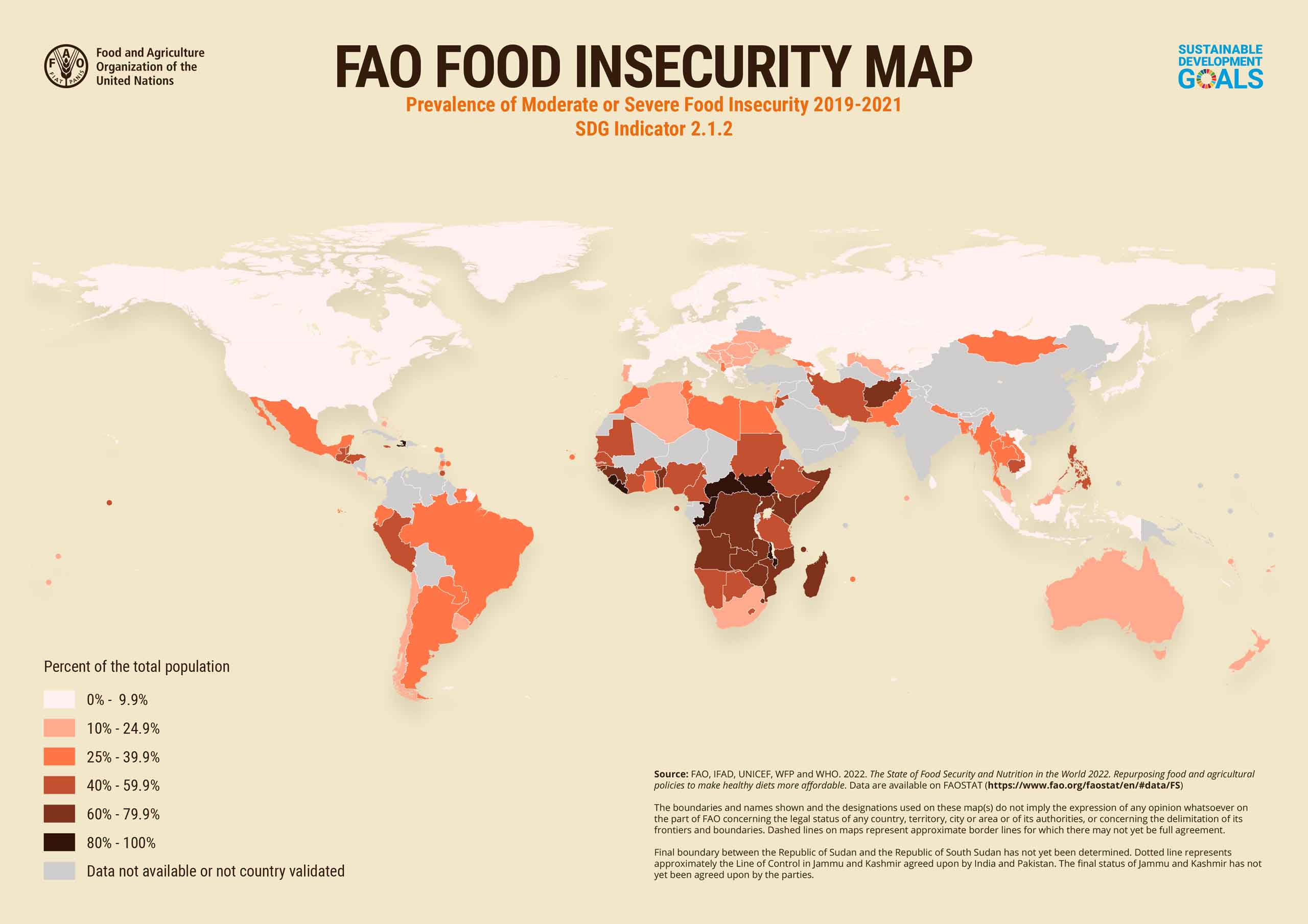The Alarming Reality Of Hunger In South Africa
- The South African Food Security Index 2024 paints a troubling picture of rising hunger levels.
- Food availability isn't the issue—access to food for all households is where the problem lies.
- Stunting levels remain a critical concern as more children lack access to proper nutrition.

It's heartbreaking to hear that one in every ten households is dealing with child hunger, and shockingly, one in every four poor households reports that their children are going to bed hungry. This is the reality we're facing today, and it's only getting worse.
These troubling statistics come straight from the South African Food Security Index 2024, a report that paints a vivid picture of the challenges our nation is grappling with when it comes to feeding its people.
This report, published by the Shoprite Group, dives deep into food security in South Africa, examining everything from availability and accessibility to how food is used and its stability over time. It's not just about having enough food—it's about ensuring everyone has access to it, no matter their circumstances.
Read also:Cassper Nyovests New Song Mamenemene A Social Media Preview Sparks Mixed Reactions
Food Security Hits a Decade-Low
Here's the hard truth: food security in South Africa is at its lowest point in ten years. Professor Dieter von Fintel, who co-authored the report, pointed out that it's alarming to see such high levels of food insecurity in a country that's supposed to be progressing. How is this even possible?
Back in 2019, the country's food security score was a respectable 64.6. Fast forward to 2023, and that number has plummeted to 45.3. What happened? The lockdown during the pandemic, coupled with an ongoing economic crisis and inflation, has had a devastating impact. When you compare South Africa to the rest of the world, we rank 59th out of 113 countries in terms of food security. But here's the kicker—we're number one in Sub-Saharan Africa. That's not exactly something to celebrate.
South Africa's Battle Against Hunger
One of the most pressing issues facing the country right now is hunger. Despite there being enough food to go around, more and more people are going to bed hungry. How does this happen? Well, it's a combination of factors like climate change, inflation, and global conflicts that have thrown the markets into chaos. And let's not forget about the high unemployment rates, which are leaving countless families struggling to put food on the table.
The reality is, just because there's food available doesn't mean everyone has the means to get it. This is where the problem lies, and it's a problem that's only getting worse with each passing day.
Inflation's Impact on Nutrition
Inflation continues to wreak havoc on the country's economy, and it's having a direct impact on people's ability to afford food. As Professor von Fintel pointed out, with inflation averaging 6% while salary increases only average 5%, many families simply can't afford the same amount of food they once could. It's a vicious cycle that's leaving people with no choice but to cut corners when it comes to their diet.
This has led to an alarming increase in households that lack proper nutrition. With food prices skyrocketing, people are opting for cheaper options that might fill their stomachs but do little to nourish their bodies. The report revealed that in 2023, nearly half of the poorest 10% of households admitted to consuming a less diverse range of foods due to financial constraints. That's a staggering statistic that highlights just how dire the situation has become.
Read also:A Teachers Genius Move Using Puff Daddy To Silence A Chaotic Classroom
“In 2023, in the poorest 10% of households, nearly half of them said they consumed a lower variety of foods than they would otherwise have due to insufficient funds,” the report found.
The Growing Threat of Stunting
The lack of proper nutrition isn't just affecting adults; it's having a devastating impact on children as well. Stunting, or impaired growth, is becoming increasingly common in South Africa. This condition occurs when children don't receive the nutrients they need during their critical development years, resulting in them not reaching their full growth potential in terms of height for their age.
South Africa is unfortunately among the 34 countries that account for 90% of the world's stunted children. We find ourselves in the same group as some of the world's poorest nations, including Mozambique, Afghanistan, and the Democratic Republic of Congo. It's a stark reminder that despite our economic standing, we're still failing our children when it comes to nutrition.
When you compare South Africa's stunting levels to countries with similar GDP per person, like Brazil, the disparity is even more alarming. In 2007, Brazil's stunting rate was 7%, while South Africa's was a staggering 21.4%. Our rates are more comparable to those of Zimbabwe, a country that's significantly poorer than ours.
In 2019, South Africa's stunting rate stood at 24%, while Zimbabwe's was just 23.5%. It's a sobering reminder that we still have a long way to go in ensuring our children have access to the nutrition they need to thrive.
The report produced by Professor Dieter von Fintel and Dr. Anja Smith from the University of Stellenbosch is available for review here.
ATM Calls for Action on Food Security
The African Transformation Movement (ATM) recently urged the government to take stricter measures to address food security. This call to action came after the tragic deaths of five children in Naledi, who reportedly consumed contaminated snacks.
The snacks in question were purchased from a foreign-owned spaza shop in the area, highlighting the urgent need for better regulation and oversight in the food industry. It's a stark reminder that food security isn't just about availability—it's about ensuring the food we consume is safe and nutritious.
As the situation continues to unfold, it's clear that action is needed now more than ever. The future of South Africa depends on it.


